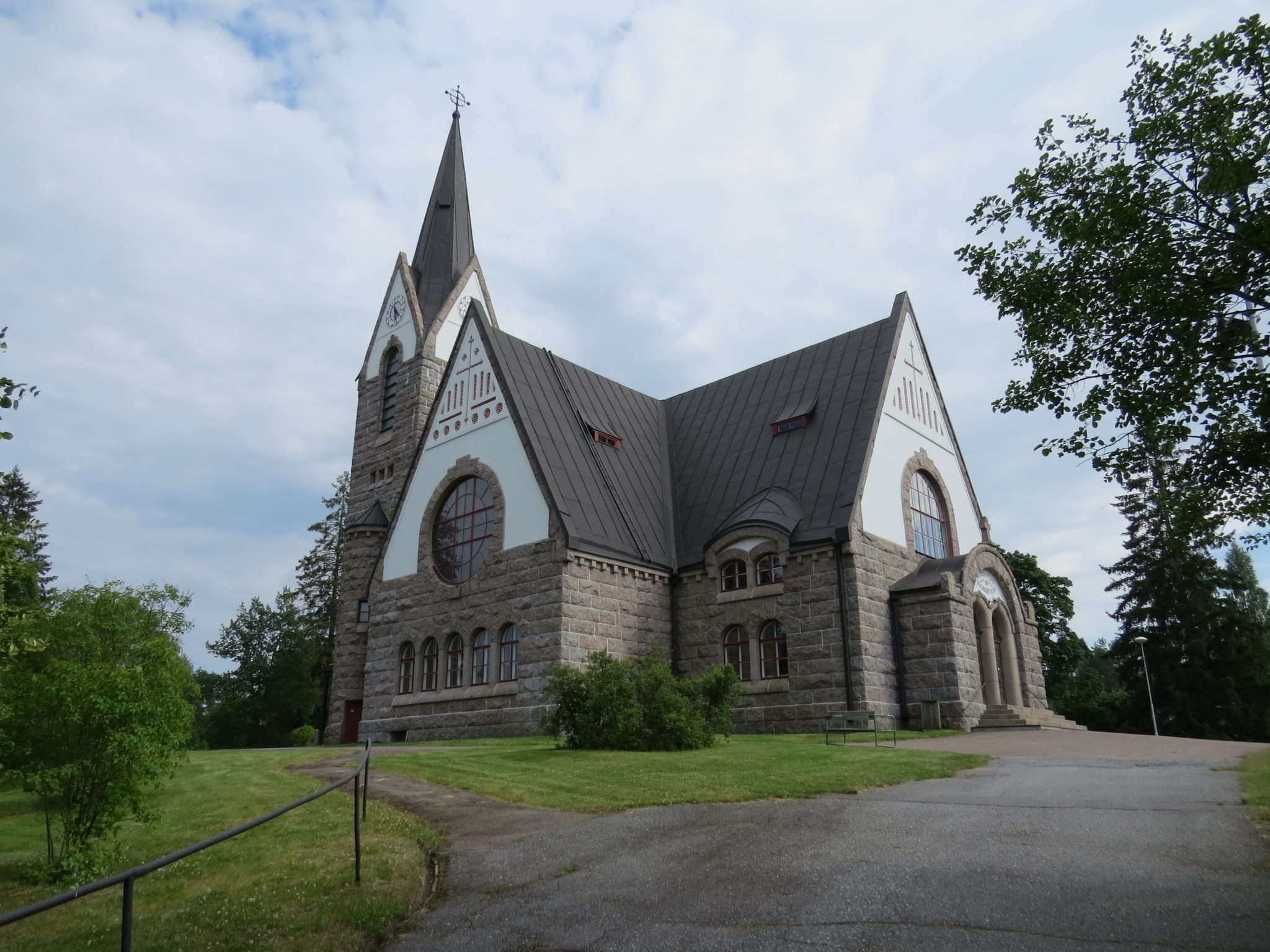Experience peculiar church of Savitaipale
Rapakivi granite is one of the main types of granite and it consists mostly of potassium feldspar, plagioclase, and quartz. Some biotite and/or hornblende can also be found in the stone. The area’s rapakivi has a homogeneous structure, which makes it easy to work with. Although rapakivi granites are sometimes associated with a tendency to crumble, the stone used in the Savitaipale church is extremely durable and will not crumble for centuries.
Kettle holes at Savitaipale can be found around schools and sports fields, as well as in the water intake area. The Paakkolampi pond near the school site and the Mustalampi pond next to the water intake are kettle ponds. Kettles formed as large blocks of ice were buried in the sand and gravel at eskers and deltas formed by glacial rivers. As the ice blocks gradually melted away, holes of various shapes and sizes were left behind. Kettles can be holes in which forest grows, but if they are in contact with surface or groundwater, they can form kettle ponds or paludified kettles.
At the edge of the Savitaipale market area is a Saimaa Geopark sign, which tells about the geology of the area. Next to the church there is a smaller sign that tells you about the rapakivi granite of Savitaipale church.
Image: Kaisa-Maria Remes
